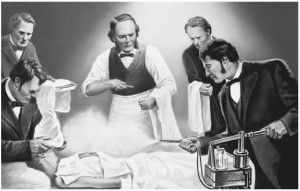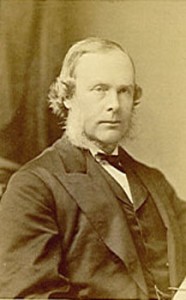Important medical breakthroughs occurred during the 1800s. Especially important was the idea that disinfectants could help prevent the spread of disease in hospitals. Joseph Lister used carbolic acid to clean wounds and surgical instruments in hospitals, which brought deaths from infection down from 60% to about 4%. Many doctors scoffed at his ideas, but his success forced them to adopt his methods. Just a few years later, Louis Pasteur and Robert Koch developed the germ theory of disease. This was also revolutionary, since many doctors until then had no idea whatsoever about the mechanism of disease. Some thought illness generated spontaneously, while others thought the atmosphere could contain the elements of ill health or that certain personalities and physical attributes predisposed people to certain diseases.
In 1879, researchers developed a vaccine for cholera. Before the turn of the century, vaccines were developed for anthrax, rabies, tetanus, diphtheria, typhoid, and plague. It must have seemed that science had conquered–or would soon conquer–all the ills of mankind. It was a hopeful time, which led both medical doctors and alienists (specialists in treating diseases of the mind) to believe that few conditions were beyond treatment and cure.
______________________________________________________________________________________


